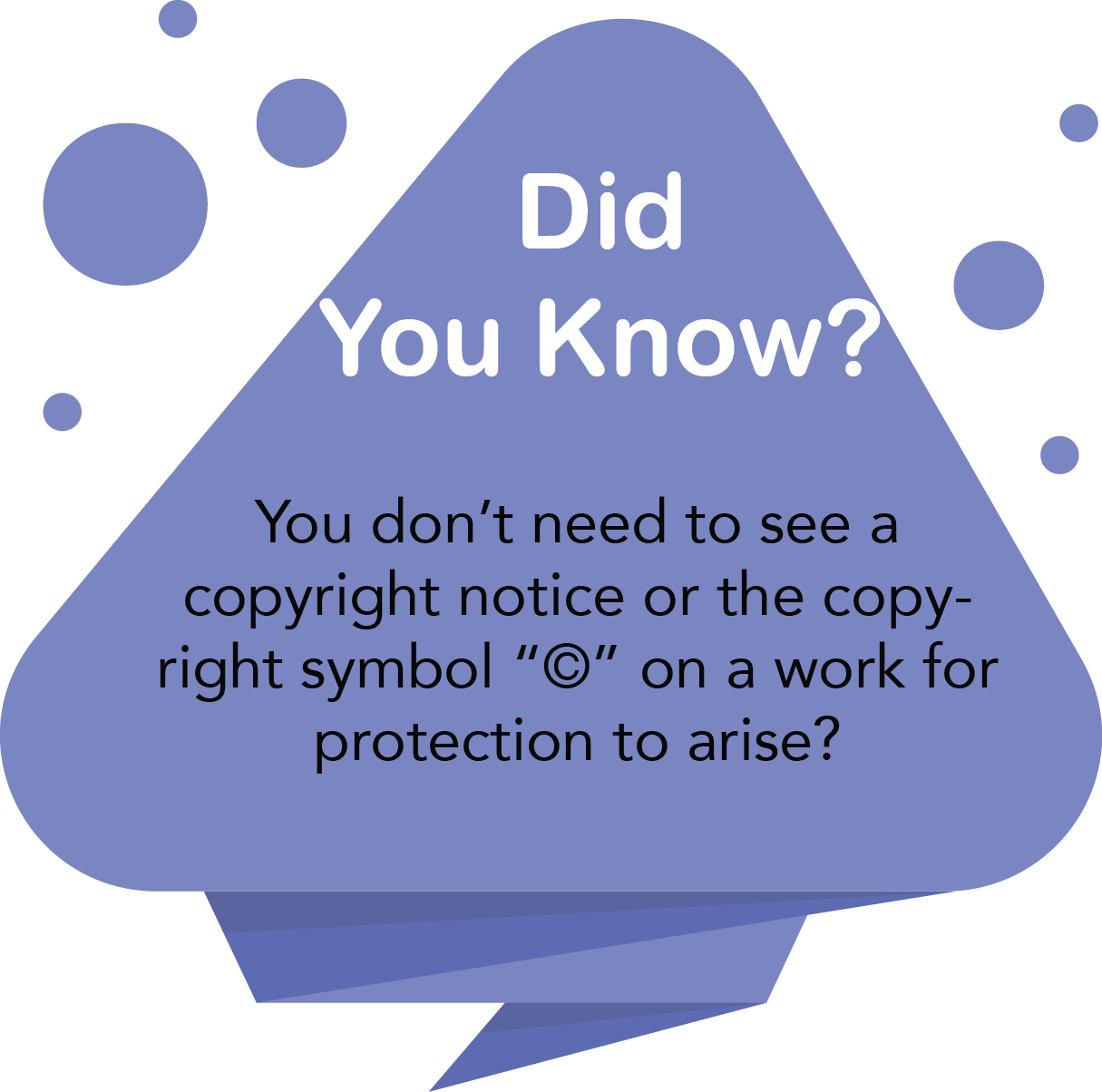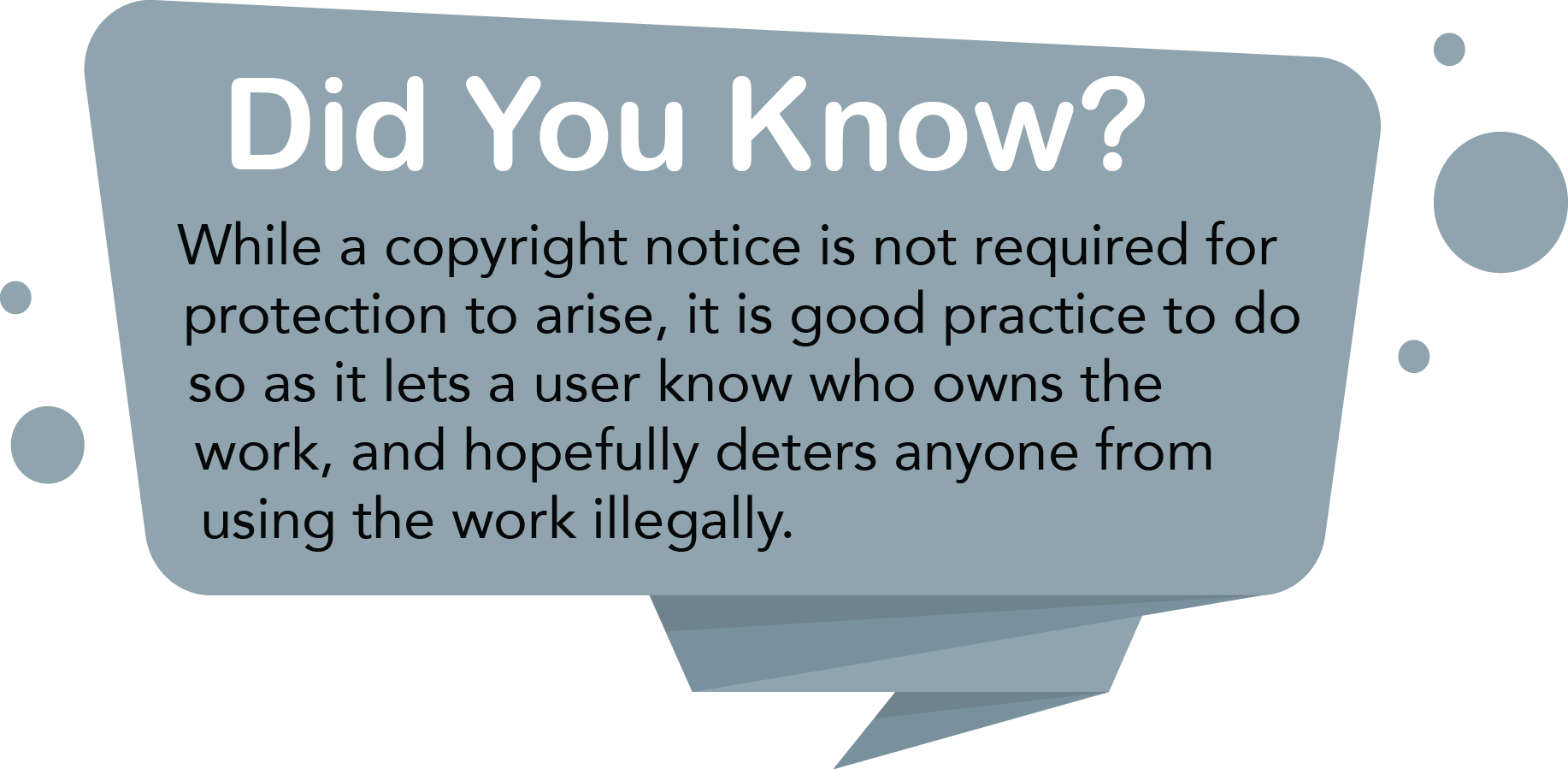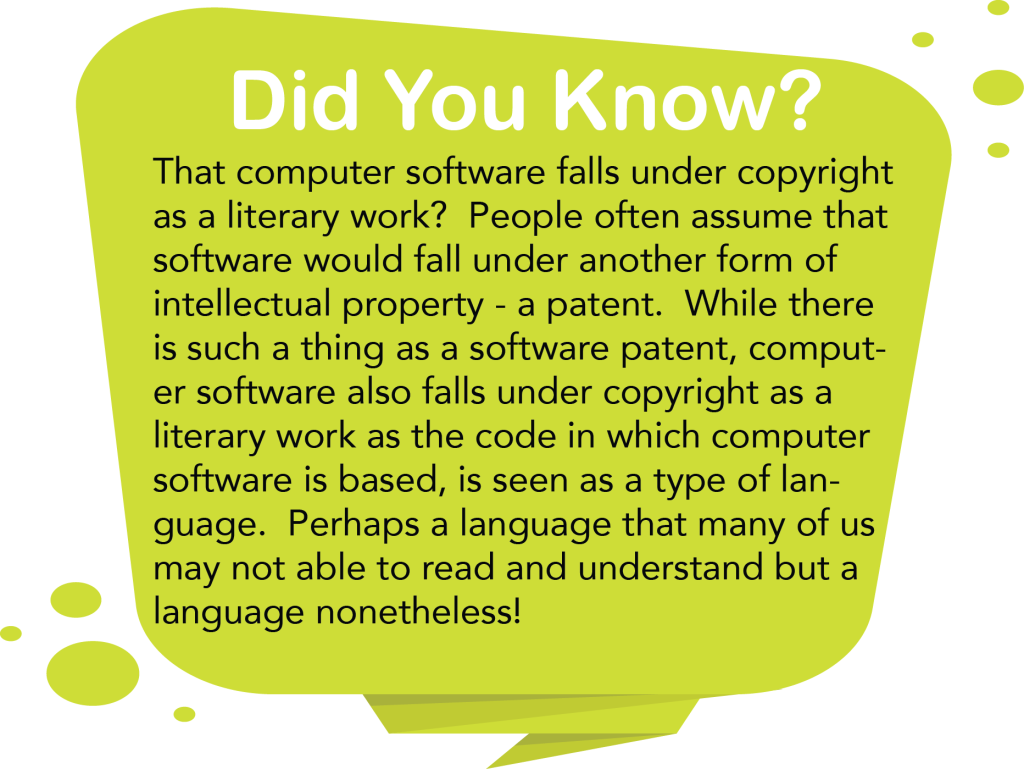What is copyright?
Copyright is a form of intellectual property which means “the right to copy,”[1] but who you are will depend on the rights granted to you. For the owner, copyright means the sole right to produce or reproduce a work or a substantial part of it in any form [and] includes the right to perform the work or any substantial part of it, or, in the case of a lecture, to deliver it.[2] If the work is unpublished, copyright includes the right to publish the work or any substantial part of it.[3] Therefore, an individual or an organization, as the owner of a copyright work, (such as a book, a play, a film), has certain rights that can prevent others from unauthorized copying of the expression of their work.
While copyright owners indefinitely have rights regarding their copyright, the law understands that there needs to be a balance struck between protecting the interests of these owners and granting access to users. The question is then raised. How can copyright users, copy and use copyright works, while also ensuring compliance with copyright law? We hope to address these questions throughout this eBook.
What does it protect?
Copyright protects the original and fixed expression of 7 categories of works. The categories and some examples include:
- Literary Works – articles, books, textbooks and computer programs;
- Musical Works – songs and compositions with or without words;
- Artistic Works – paintings, drawings, images, photographs and sculptures;
- Dramatic Works – films, plays, screenplays and scripts;[4]
Copyright also protects other subject-matter, consisting of:
- Performers’ Performances – performance of an artistic, dramatic or musical work;
- Sound Recording – recordings consisting of sounds, whether or not it is a performance of a work;
- Communication Signals – radio waves transmitted through space without any artificial guide, for reception by the public.[5]
Therefore, copyright does not protect a “new and useful inventions (product, composition, machine, process) or any new and useful improvement to an existing invention,”[6] (patents) nor “a combination of words, sounds or designs used to distinguish the goods or services of one person or organization from those of others,”[7] (trademarks).
Under copyright law, once you have created an original work in a fixed form, protection arises automatically. The concept of “fixed” relies on the fact that one can’t simply have an idea for a copyright work and keep it as that – an idea. The protection arises out of the expression of that idea in a fixed form. Additionally, “original” also is a requirement that a work must meet in order for it to be copyright. However “original” doesn’t mean that it must be unique or novel, like with a patent. Rather the courts have reasoned that “original” means more than a mere copy of another work, and that generally speaking an individual must have exercised their own skill and judgment in the work in question.[8] For example, writing an e-book on copyright and digital learning is certainly not novel or unique, but it would be considered original as there would certainly be an exercise of skill and judgment by the authors.[9] So, while this e-book would be considered an original literary work and therefore protected under copyright law, (or in this case, a CC-BY license) there would not be a monopoly over the idea. Ultimately another person could write an e-book on the same topic, so long as it was done independently.
Once a copyright work has been created does it need to be registered in order for protection to arise? No. Unlike other areas of intellectual property such as patents, (where you would be required to seek registration for protection) with copyright, one does not have to register their work for protection to arise. Therefore, many misunderstand that unless they know it is registered or if they don’t see a copyright symbol /notice, there is no protection in place. While many works will have a copyright notice explaining that the work in question is protected by copyright and will detail who the authors and owners are, it is not a requirement under law and thus, many works that you may come across may not have any formal indication that it is copyright and protected under law. A general rule to apply to help with this is to always assume that unless you know that the work is in the public domain or you see a public domain symbol, notice, or Creative Commons license, it is still under protection.
Copyright Term
Generally speaking, in Canada, the copyright term, (i.e. the time in which the work is protected under law), will be for the life of the author plus 50 years and until the end of the relevant calendar year. Then, once the term has expired the copyright protection no longer exists as it will have entered into the public domain. It should be noted that there are some exceptions to this, such as works of crown copyright, joint authorship, unknown authors and posthumous works. These exceptions are better explained in the Public Domain in Canada table.
Public Domain
We often hear, “well, I found the work in the public domain, on the Internet and therefore I thought it was free to use without restriction.” Truth be told, public domain under copyright is not equivalent to “found in a public space, that anyone can access for free without any restrictions.” For the purposes of copyright, public domain means that the copyright term has expired and thus as a result the work has automatically entered into the public domain. For the user of a copyright work, this means that there are no restrictions on copying or adapting, no need to seek permission, and ultimately no uncertainty about your rights as a user. However it is not always as simple as that. What if there are multiple authors? Or the work is owned by a corporation, or it is an image or a cinematographic work? To learn more about how to figure out if a work has entered into the public domain, you can refer to the Public Domain in Canada table.
However copyright works do not only reach the public domain when the term expires. A copyright owner can, at any time, place his or her copyright into the public domain. Many do this by providing the work with a Creative Commons dedication, “CC0” or “Public Domain” (more about this in our chapter on the Impact of Open). This action results in a similar reaction as when the copyright term has expired – meaning there are no restrictions placed on the user as to how they may use the work. For more information on copyright (and copyleft) symbols and their meanings, check out this page from Wikimedia Commons.
- Understanding Copyright – The Basics. (n.d.). Retrieved from http://www.ic.gc.ca/eic/site/cipointernet-internetopic.nsf/eng/h_wr02281.html/ ↵
- Understanding Copyright – The Basics. (n.d.). Retrieved from http://www.ic.gc.ca/eic/site/cipointernet-internetopic.nsf/eng/h_wr02281.html/ ↵
- Understanding Copyright – The Basics. (n.d.). Retrieved from http://www.ic.gc.ca/eic/site/cipointernet-internetopic.nsf/eng/h_wr02281.html/ ↵
- Understanding Copyright – The Basics. (n.d.). Retrieved from http://www.ic.gc.ca/eic/site/cipointernet-internetopic.nsf/eng/h_wr02281.html/ ↵
- Understanding Copyright – The Basics. (n.d.). Retrieved from http://www.ic.gc.ca/eic/site/cipointernet-internetopic.nsf/eng/h_wr02281.html/ ↵
- Understanding Copyright – The Basics. (n.d.). Retrieved from http://www.ic.gc.ca/eic/site/cipointernet-internetopic.nsf/eng/h_wr02281.html/ ↵
- Understanding Copyright – The Basics. (n.d.). Retrieved from http://www.ic.gc.ca/eic/site/cipointernet-internetopic.nsf/eng/h_wr02281.html/ ↵
- McKeown, J. (2000) Fox on Canadian Copyright Law and Industrial Designs (4th ed.), Toronto, Ontario: Carswell. ↵
- McKeown, J. (2000) Fox on Canadian Copyright Law and Industrial Designs (4th ed.), Toronto, Ontario: Carswell. ↵

